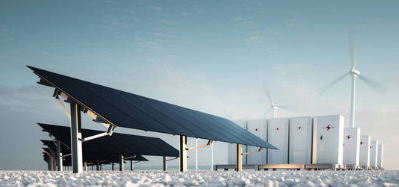In the dynamic landscape of today’s energy sector, the need for efficient and sustainable energy storage solutions has never been more critical. As we transition towards a future powered by renewable energy sources, the demand for technologies that can store and manage this energy becomes increasingly apparent. One such game-changing innovation is the Centralized Energy Storage System (CESS), a revolutionary approach to storing and distributing power on a large scale.
Understanding Centralized Energy Storage Systems:
Centralized Energy Storage Systems refer to advanced facilities designed to store and manage energy centrally, serving as a backbone for power grids and renewable energy integration. These systems leverage cutting-edge technologies to store excess energy generated during periods of high production, ensuring a stable and reliable energy supply during peak demand or when renewable sources are unavailable.
Key Components and Technologies:
- Battery Storage: CESS often incorporates large-scale battery storage solutions, such as lithium-ion batteries, flow batteries, or advanced solid-state batteries. These technologies offer high energy density, long cycle life, and fast response times, making them ideal for storing and releasing energy as needed.
- Flywheel Systems: Flywheel energy storage systems use the rotational kinetic energy of a spinning mass to store and release energy. These systems provide rapid response times and are well-suited for short-duration energy storage and grid stabilization.
- Compressed Air Energy Storage (CAES): CAES systems store energy by compressing air and storing it in underground caverns. During times of high demand, the compressed air is released to generate electricity through turbines. This technology offers a balance between high energy density and scalability.
- Thermal Energy Storage: Thermal storage systems store and release energy through phase-change materials or by storing heat. These systems are particularly effective in industrial applications and can enhance the efficiency of renewable energy sources like solar and geothermal.
Benefits of Centralized Energy Storage Systems:
- Grid Stability: CESS plays a pivotal role in stabilizing power grids by providing a buffer for fluctuations in energy production and demand. This ensures a consistent and reliable energy supply, even in the face of intermittent renewable sources.
- Renewable Energy Integration: The intermittent nature of renewable energy sources, such as wind and solar, can be mitigated through centralized energy storage. CESS allows for the efficient storage of excess energy generated during favorable conditions and its release when needed, facilitating greater integration of renewables into the grid.
- Enhanced Efficiency: By optimizing the use of stored energy during periods of low demand, CESS improves overall grid efficiency. This results in reduced waste, lower operational costs, and a more sustainable energy ecosystem.
- Grid Resilience: Centralized energy storage enhances the resilience of power grids against unexpected events, such as natural disasters or cyberattacks. The ability to store and release energy quickly contributes to grid stability and minimizes downtime.


Leave a Reply